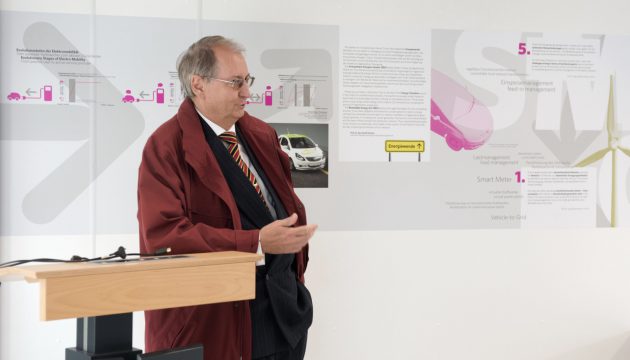New efficiency regulations demand innovative technology
In Europe, the Energy Performance of Buildings Directive (EPBD) offers guidelines and efficiency targets that provide a framework for optimising energy efficiency in commercial and residential buildings. Since the end of 2020, all new public buildings in Europe have been required to be nearly zero-energy buildings (NZEBs). The ultimate aim of the EPBD and associated directives is to make all of Europe carbon neutral by 2050. To meet these requirements, more and more buildings will have to be equipped with high efficiency heat recovery units, in which the fan is the most critical with regards to energy consumption and noise.
The European energy-related products (ErP) directive requires that appliances meet specific efficiency targets in order to be sold and used in Europe. Introduced in 2013, these requirements became stricter in 2015, and are set to be tightened once more very soon. This means a lot of existing systems need to be upgraded. And installing more efficient fans is the key.
New, electronically commutated (EC) fans upgrade HVAC systems so they run with maximum efficiency. EC fans are not only more efficient and more effective than any air-moving technology that has come before, they’re also able to be fitted in new installations or retrofitted in existing ones. This means they provide a much-needed way to upgrade existing systems in buildings where new installations are not possible.
EC fans take efficiency to a new level
Traditional AC fans only have two states of operation: on or off. Either the fan is blowing at full speed, or not at all; in case you want to regulate the fans, you need to install additional devices. This means AC fans often use far more power than is needed to fulfil real-time ventilation requirements. EC fans offer an alternative. They use cutting-edge EC motor technology to reduce power usage by combining alternating current (AC) and direct current (DC) voltages. By only using the amount of electricity needed to regulate the air quality at any given moment, they save a huge amount of power.
To get an idea of how EC fans improve the efficiency of a HVAC system, think of an office building in winter. EC fans make it possible for the system to quickly adjust to the current conditions, varying the speed based on dynamic factors like the number of people in the building. The motor can run the fans constantly at low speed, keeping the temperature and CO2 level stable. Or it can ramp the fans up to a high speed for quicker results, for instance, in the morning when the system is first warming up the building. And this is all accomplished using less electricity than traditional AC fans.
Delta’s EC fans utilise an airfoil blade design that enables high efficiency with a very low level of noise. Which is important. HVAC systems operate in residential and commercial buildings , so the noise level needs to be comfortable.
EC Fans that are reliable, robust and designed to last
Delta has engineered a range of EC fans that are prepared for the upcoming ErP restrictions. In fact, they already operate within the new requirements. Plus, they can be configured to work with different sensors, and to use the parameters required to meet specific customer needs. Using Modbus communication, they receive information from sensors in real time, allowing for the fan speed to be continually adjusted.
Powered by an EC motor, also known as a brushless DC electric (BLDC) motor, Delta’s EC fans use magnet optimisation to achieve an efficiency level of more than 90%. The motor is engineered to perform well in all conditions, with a motor-cooling design that keeps the temperature under control. It also has an ingress protection (IP) rating of 54, meaning it’s protected from potential contaminants like dust and water.
The EC fans are internally regulated by a super-efficient control module. With a power factor correction (PFC) design, and space vector pulse width modulation (SVPWM), the control module offers an efficiency level of over 95%. It adjusts the amount of power supplied to the fans, maximising the use of power drawn from the main supply and keeping the overall power usage as low as possible. Connected using an RS485 interface, it’s highly compatible and offers reliable internal systems communication.
Delta’s EC fans utilise an airfoil blade design that enables high efficiency with a very low level of noise. Which is important. HVAC systems operate in residential and commercial buildings , so the noise level needs to be comfortable.
EC Fans upgrade efficiency in all sorts of applications
Efficient, effective air ventilation has never been more important. EC fans maximise the efficiency of HVAC systems, but that’s not their only function. They can also optimise efficiency in electronic systems outside of building ventilation, such as keeping the servers cool in data centres, or cooling telecom equipment shelters. And they can even be fitted into sustainable-power installations like solar-power systems or wind turbines, making them even better for the planet.
Delta’s EC fans offer an innovative and cost-effective way to improve air quality, reduce carbon pollution and ensure buildings are ErP compliant. Everybody wins: building occupants, building operators and the world at large—less pollution results in fresher air for everyone and less strain on the environment.



